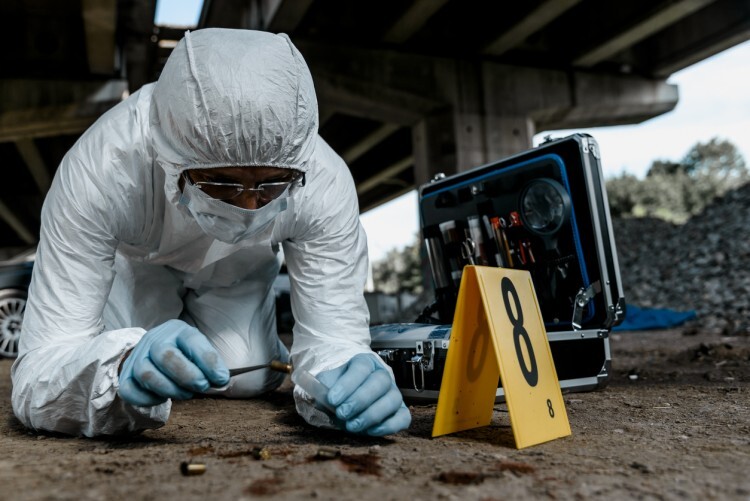

Law enforcement is trained to gather evidence and solve crimes. However, a crime scene involves many people and many steps, so everyone involved must work together to effectively process a crime scene. Understanding the anatomy of a crime scene can make or break a case.
To learn more, check out the infographic below, created by Hilbert College Global’s online Bachelor of Science in Criminal Justice.

A crime scene describes the location where a crime takes place. It can also include where evidence is found or where a suspect lives.
A robbery is a theft that involves violence or the threat of violence. Robbery crime scenes may include, convenience stores, commercial establishments, banks, private residences, parking lots or the streets. Basically, it’s anywhere a person was robbed.
A homicide is a murder committed intentionally or during the commission of another crime. Homicide crime scenes may include where a victim was killed and where the body was found. It may also include where a murder was planned or where the murder weapon was discarded.
A secondary location is a site important to identifying and prosecuting a suspect. Secondary locations may include the paths a suspect traveled during the commission of a crime, where a second crime was committed, or a location where suspects convened before or after a crime. These crime scenes may be found after the initial crime is discovered.
An assault is the intentional harming of another person physically. Assault crime scenes may include a residence, highways and sidewalks, parking garages and lots, convenience stores or hotels and motels. An assault may happen anywhere, so crime scenes can vary.
Some crimes are committed online or through invasive malware. For cybercrimes, investigators go through victims’ digital devices to find evidence. Suspects’ computers and mobile devices are also considered crime scenes.
A crime scene isn’t considered cleared until the investigative team has gathered all possible evidence and information. This may take between one and two days. If a crime takes place over multiple locations, it may take longer to process each crime scene and clear them all.
At the crime scene, law enforcement dispatches a crime scene detail to process the scene through:
Evidence can prove motive, opportunity, intent, planning and identity. A perimeter must be established to keep the crime scene from being compromised. Law enforcement searches the scene for physical evidence and any clues about the subject.
Technicians photograph blood evidence, victims’ wounds, surrounding areas and physical evidence before being bagged. The scene is sketched with measurements. Everything is put into evidence bags, labeled and sent to the appropriate authorities.
Law enforcement establishes witnesses and obtains valid identification. Then, they separate each witness and record their name, birthday, address and all phone numbers. Finally, witnesses are interviewed individually on scene or at the office location.
The U.S. Agency for International Development (USAID) lists the steps of a well-planned investigation as:
USAID lists the most important steps while processing a scene as follows:
Once all possible information has been gathered from a crime scene, investigators and attorneys build a case to either convict or exonerate a suspect.
Forensic analysts examine the crime scene evidence. Whether the evidence is physical or digital, forensic analysts extract information and provide it to the defense and prosecution. Forensic analysts may also serve as expert witnesses.
Through examining the crime scene and data provided by forensic analysts, investigators assemble a list of suspects. Investigators interview possible suspects and reinterview witnesses. When suspects are identified, they may be brought in for questioning or arrested.
Investigators turn over their findings to prosecutors and defense lawyers. The lawyers may return to the crime scene to better understand the crime. Suspects work with the defense to prove their innocence. Both parties gather expert witnesses to strengthen their cases.
During trial, witnesses take the stand to explain what they saw. Lawyers reconstruct the crime scene to either prove or disprove a defendant’s guilt. Evidence gathered at the crime scene is presented to the judge and jury.
Every crime leaves evidence behind, and law enforcement is trained to identify it. At the crime scene, technicians, officers and investigators gather all available evidence and do their best to find a suspect. Many steps and different professionals are involved, and they all must understand their roles and how crime scenes function.
Sources